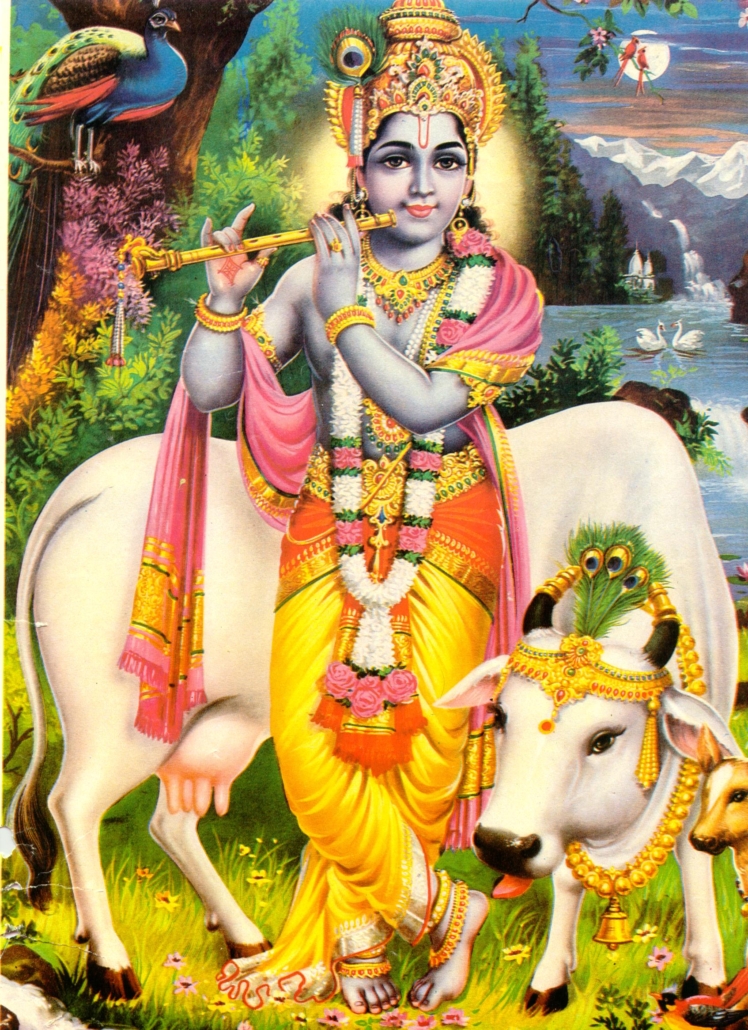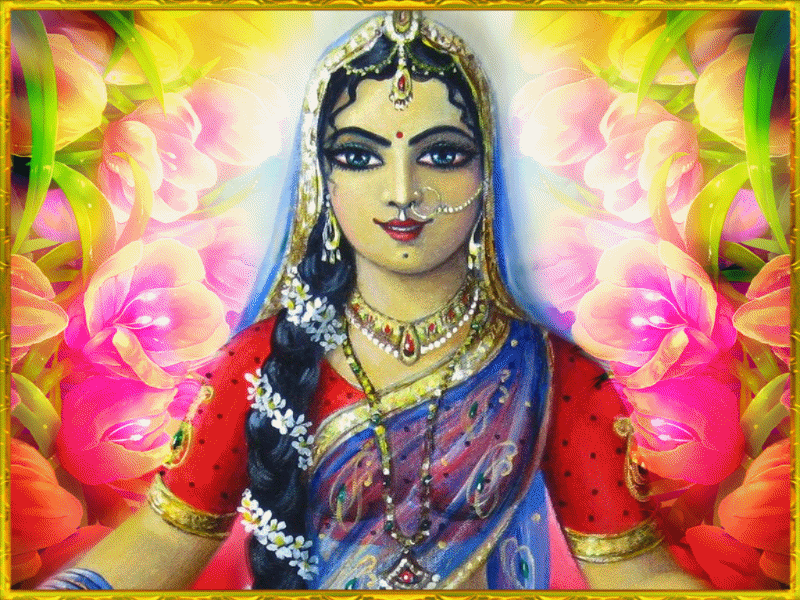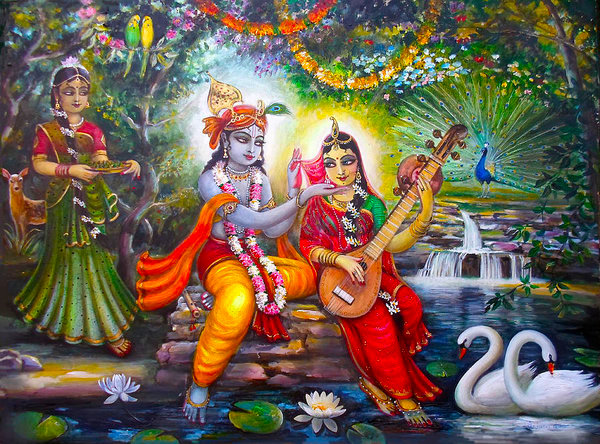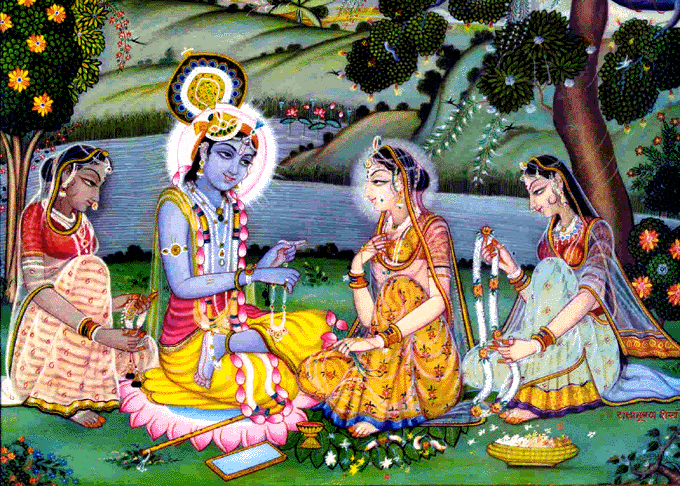Mahanidhi Madan Gopal Das
After hearing that chanting 64 rounds a day gives spiritual perfection, some very sincere and well-meaning devotees begin chanting 64 rounds a day.
However, they soon face problems in the form of maintaining the quota, being attentive and not doing robotic/mechanical chanting, committing aparadhas, lack of enthusiasm, not seeing any results, a gradual loss of taste for the practice itself, and worst of all—PRIDE—pramada, an aspect of the 10th nama-aparadha).
When trying to understand any truth in shastra, one must always consider kala, desha and patra—the time and place, situation and persons involved. It appears that many devotees have misunderstood the circumstances (kala, desha, patra) of Sri Chaitanya Mahaprabhu’s ONE INSTRUCTION regarding the daily chanting of one lakh japa (100,000 names aka 64 rounds).
If one studies the life of Mahaprabhu, one sees that in every instance and in every place, Sri Chaitanyadeva was very very strict about maintaining maryada, which means following the proper conduct or behavior according to one’s social or spiritual position (varna/ashram).
So because Chaitanya Mahaprabhu was as a brahmin (Sri Vishvambhara Mishra), whether it was from His different personal servants, or in homes of His devotees, anywhere in India, Mahaprabhu ONLY ATE FOOD FROM THE HAND OF A BRAHMIN, and not from anyone of any other jati or class, regardless of their personal purity or spiritual realization.
Mahaprabhu’s Instruction to Brahmins
Mahaprabhu’s one and only instruction about chanting 64 rounds was spoken only to grhastha brahmins who wanted to feed the Golden Avatara in their homes.
Chaitanya Bhagavata narrates the story, “When the brahmins invited Chaitanya Mahaprabhu for prasada, Gauranga smiled and said, ‘I take meals only in the house of a lakṣeśvara brahmin.’
Hearing this, the brāhmaṇas became worried. Praying to Prabhu, the brahmins said, ‘O Gosai, what to speak of a hundred thousand, none of us possess even a thousand rupees.’
Mahaprabhu replied, ‘Do you know who is a lakṣeśvara? He is someone who daily chants a hundred thousand holy names (aka 1 lakh or 64 rounds). I take meals in only such a brahmin’s house, not in the houses of any other brahmins.’”(Chaitanya Bhagavat 3.9.117-123)
After reading this lila and Gauranga’s shiksha herein, some nice devotees innocently think, “O, if I don’t chant 64 rounds a day, then God, Sri Chaitanya Mahaprabhu or Sri Krishna, won’t eat my bhoga offerings.”
Thinking like this is ok, but it’s not really proven in this lila. One can see two points illustrated in this lila:
Point One: Since He was a Brahmin, Mahaprabhu would not display adharmic behavior by eating grains from non-brahmins, and He never did as is evident from all His biographies.
Point 2: Although it is not required, if a devotee can, then certainly it would be very good to chant a lakh (64 rounds) of nama before making a bhoga offering to his/her Thakurajis of Gaura-Nitai, Girirajaji, or Radha-Krishna.
Now let’s hear Mahaprabhu’s instructions on nama japa and attaining spiritual perfection for all the masses of us, non-brahmins and non nitya-siddha associates. Sri Chaitanya’s following teachings on siddhi in nama bhajana are the perfect instructions for every human being at all times and in every place. So everyone please understand them clearly and practice bhakti bhajana accordingly.
Mahaprabhu’s Teachings for All
Once in Navadvipa, in a general assembly of all His followers, which included brahmins, kshatriyas, vaishyas, sudras, mlecchas, yavanas, and assorted other outcastes, the all-merciful Mahaprabhu personally instructed everyone saying, “Now please, everyone happily hear the Krishna nama maha-mantra from Me……..
Hare Krishna Hare Krishna Krishna Krishna Hare Hare
Hare Rama Hare Rama Rama Rama Hare Hare
āpane sabāre prabhu kare upadeśe
Krishna-nāma mahā-mantra śunaha hariṣe
“I have told you the mahā-mantra. Now all of you chant this mantra as a daily practice (abhyasa).”[mmgd: which some take to mean 4, 20, 24, 64, 128 rounds per day]
prabhu bale kahilāṅa ei mahā-mantra
ihā japa giyā sabe kariyā nirbandha
Mahaprabhu continued, “Everyone will attain all perfection by it [i.e. Hare Krishna maha-mantra]. At every moment chant it, there is no other rule (vidhi nāhi āra).” (Chaitanya Bhagavat 2.23.75-78)
ihā haite sarva siddhi haibe sabāra
sarva-kṣaṇa bala ithe vidhi nāhi āra
Thus Mahaprabhu establishes that the Hare Krishna maha-mantra so transcendentally amazing and wonderful that it will give PERFECTION TO ANYONE who chants it daily. Srila Prabhupada repeatedly quoted this verse in his lectures.
Srila Prabhupada said:
- “That is the version of Lord Caitanya Mahāprabhu. He said, ihā haite sarva-siddhi haibe tomāra [Caitanya-bhāgavata Madhya 23.78]. He also stresses that ‘Simply by chanting, you will get all perfection.’” (folio 710217L2GOR)
- “That’s a fact. Caitanya Mahāprabhu says, ihā haite sarva-siddhi haibe tomāra. Caitanya Mahāprabhu blesses, “You will get all perfections simply by chanting this Hare Krishna mantra.”(folio 720714SB.LON)
- “If you chant or if you associate with the chanting of holy name of Krishna, then you will get the highest perfectional stage of life. (folio 680613BG.MON)
- “Thus Lord Caitanya has blessed us. Simply by chanting Hare Krishna, we will achieve the perfection of self-realization.” (folio POP cp. 5)
The main point Sri Chaitanya Mahaprabhu establishes here is that daily Hare Krishna Maha Mantra japa is compulsory. Other than Mahaprabhu’s instructing the brahmins of Navadvipa to chant 64 rounds a day, I have not seen this instruction in any of the universally accepted Gaudiya Vaisnava shastras.
However, there is some mention about chanting 64 rounds in a not so authoritative book titled Prema-vilasa (chapter 17):
“Mahaprabhu was also in the habit of chanting three lakhs, and giving one lakh to His followers.”
prabhura āchāye saṅkhya, tina lakṣa nāma
eka lakṣa bhakta gaṇe, kaila kṛpā dāna
“In His own words, Gaurāṅga told Sri Rupa and the Vaiṣṇavas that the counting of one hundred thousand names is certainly to be done.”
gaurāṅga śrī-mukhe rūpe, kahila vaiṣṇave
lakṣa nāma saṅkhya kari, avaśya karibe
From the teachings of Sri Chaitanya Mahaprabhu, Sri Haridasa Thakura and Srila Prabhupada, it is clear that chanting the Hare Krishna maha mantra is the fastest, most powerful and best means to attain spiritual perfection in Krishna prema.
Not only Mahaprabhu but numerous shastras confirm the unlimited power of Sri Krishna’s Divine Name. The Name is directly Krishna Himself, and thus Sri Nama Prabhu can easily give one all perfection (sarva siddhi).
Since Mahaprabhu’s time, many Gaudiya Vaisnavas have adopted the practice of daily chanting 64 rounds of nama-japa on tulasi beads. Sri Rupa Gosvami, Sri Raghunatha Dasa Goswami, the other Goswamis, and acharyas down to the present day have also chanted 64, and instructed their disciples to do likewise.
In the beginning of ISKCON in 1966, Srila Prabhupada ordered his disciples to daily chant 64 rounds. Seeing their inability to do so, however, Srila Prabhupada reduced the number to 32 and then finally to 16.
Other than Mahaprabhu’s one time demanding His brahmin hosts to daily chant 64 rounds, the Gaudiya Vaisnava purvacharyas and contemporary Gurus all stress the need to daily chant a fixed number of nama japa with the right feeling, mentality and attitude—be it 4, 16, 24, 64, or 192 DAILY ROUNDS.
In addition, all sadhakas should happily and peacefully keep engaged mentally and physically (where possible) in Krishna consciousness, so they can remember Krishna at the time of death. Of course, if one can, under the order of and with the blessings of his Sri Guru, steadily chant 64 rounds EVERYDAY WITHOUT FAIL that is very good.
In this regard, Mahaprabhu said, “Of all forms of bhakti practices, nama sankirtana is the best, for if one takes the name without offenses, one will attain the treasure of Krishna prema. (Chaitanya Caritamrita 3.4.71)
tāra madhye sarva-śreṣṭha nāma-saṅkīrtana
niraparādhe nāma laile pāya prema-dhana
It must be noted that only a very rare sadhaka can continue to chant 64 rounds of HONEST nama japa every day without fail throughout his/her life with the proper consciousness, humility, attention, absorption, and most of all without aparadhas.
For those who cannot chant 64, however, still with the blessings of Sri Krishna and Sri Guru, just by practicing any limb of bhakti bhajana, one will definitely attain spiritual perfection and Radha Govinda prema.
SUMMARY:
64 is not a magic number in that—“Bingo! I hit 64 a day and now perfection is in my pocket!” Although quantity japa certainly helps, it does not guarantee perfection. Success depends on QUALITY NOT QUANTITY.
Our sadhana practices—be they chanting, hearing, worshiping or whatever—must bring about purification of the mind, reformation of the character, transformation of consciousness, melting of the heart, and a direct experience of Radha and Krishna within and without.
But don’t worry if you just can’t chant 64 a day. You can still attain spiritual perfection. In other yoga disciplines, personal performance brings perfection. But in bhakti only love brings perfection.
Perfection or siddhi in bhakti depends on you and Krishna—your loving endeavors offered to Krishna and Krishna’s sweet mercy returning from His heart.
In addition, the following factors will surely help bring about perfection in sri harinama japa:
- The mercy and sweet will of Bhagavan Sri Krishna.
- The blessings and satisfaction of Sri Guru.
- Chanting a daily fixed number of japa per Guru’s order.
- Quality japa which means nama japa that is free from all types of aparadhas, misconceptions, and selfish ambitions.
- Proper moral behavior, which means following the four principles of purity.
In closing, we hope this post will encourage all the surrendered devotees struggling every day to chant “their rounds” with the desire to attain spiritual perfection and the eternal loving service of Radha-Govinda Yugala in the groves of Vraja Dhama.
(Special thanks to Sri Advaita Dasji)
Sri Harinama Japa ki jai! Jai Haridasa Thakura ki jai! Srila Prabhupada ki jai! Jaya Jaya Sri Radhe!





